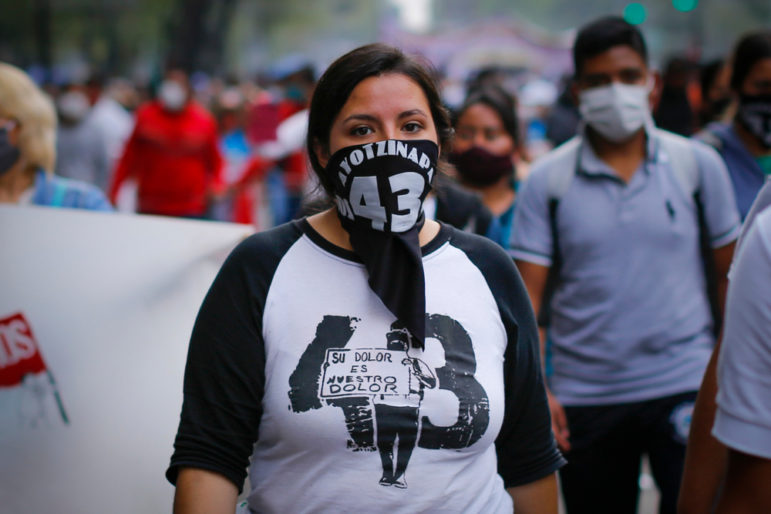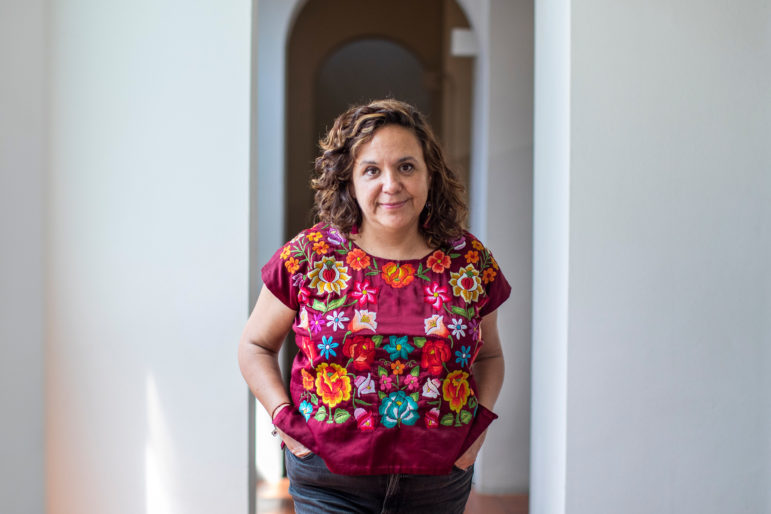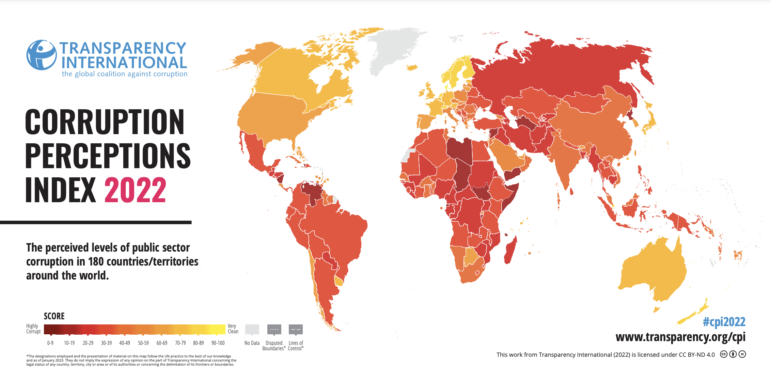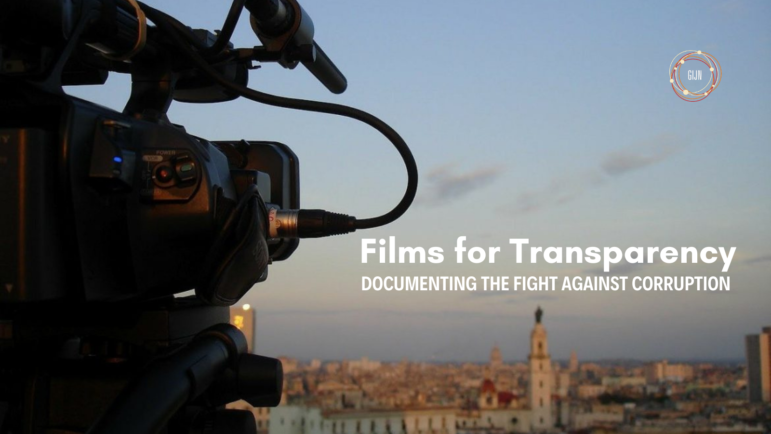

A 2022 demonstration in Mexico City protesting the federal government's lack of transparency about the killing of 43 students from the village of Ayotzinapa. Image: Shuttersock,
Mexico’s Transparency Institute Helped Reporters Uncover Corruption and Wrongdoing: How Will Investigation Journalism Fare Once It’s Gone?
Read this article in
On the night of September 26, 2014, 43 young people studying to become teachers in Ayotzinapa, a small town in southern Mexico, disappeared.
It would take years for the truth about what happened to them to be uncovered, and crucial to putting the pieces together were the investigative reporters that used national transparency laws to uncover what took place that night.
Zorayda Gallegos Valle, a contributor to El Universal, one of Mexico’s most important newspapers, petitioned for documents related to the case through Mexico’s Transparency Institute. Following her request, the organization forced the then-Attorney General’s Office to hand over a file of more than 52,000 pages, including documents that revealed serious lapses in securing the crime scene.
Journalism overcame the silence, and a year after the tragedy, the government was forced to make the file available to the media.
While the documents did not provide all the answers it helped uncover the details of how the students of the rural teacher’s college became victims of both the local police, criminal organizations, and the security forces, and revealed that the official version recounted by the authorities did not coincide with what was on record.
End of An Era
The body so key to the document release in the case was officially called the National Institute for Transparency, Access to Information, and Personal Data Protection — a body known as INAI for its acronym in Spanish.
While the Ayotzinapa case was one of the most important in Mexico in recent years, reporters and citizens have been using INAI to dig into wrongdoing across the country for years.
But former Mexican President Andrés Manuel López Obrador argued that INAI had become an increasing financial burden, and in March, after a lengthy debate, and on the watch of his successor, the body was eliminated.
With the disappearance of INAI, access to documents, files, and classified information — which are key to highlighting the country’s structural problems of corruption, impunity, and opacity — has been threatened.
The government insists that the dissolution of the body will not limit transparency — “the disappearance of INAI does not mean that transparency in government is going to disappear,” current President Claudia Sheinbaum said recently.
But already, the measure has investigative reporters on alert and mourning what could be lost.
A Lost Guarantee
The Federal Law on Transparency and Access to Public Information was enacted in 2002, and INAI, as an autonomous body, provided guarantees of independence from the interests of the executive branch. Through platforms such as Infomex and the National Transparency Platform, any citizen, journalist or not, could request information from public institutions.
With the disappearance of INAI and related constitutional reforms, it will now be the government itself through the newly created Anti-Corruption and Good Government Secretariat that decides whether or not to provide the requested information.
Journalists and transparency specialists have described this as a serious setback, fearful that moving transparency decisions and authorizations ‘in-house’ will impact independence and hinder the mechanisms that were designed to guarantee accountability.
“It’s likely that when someone requests information and that agency has to intervene, it will be a partial intervention or one that goes against the requester,” warns reporter Zorayda Gallegos Valle, who in 2016, along with Silber Meza Camacho, won the National Journalism Award for her reporting on the Ayotzinapa case.

Reporter Zorayda Gallegos Valle specializes in access to public information and the opening of confidential files on issues of justice, corruption, and accountability. Image: Courtesy of Gallegos Valle
Gallegos Valle says another major concern is that the threshold for being able to ask for documentation has changed. Where previously that allowed for the release of information related to corruption and serious human rights violations, now the bar has been raised.
“Now there will [have to] be ‘verifiable acts of corruption,’ and there will have to be final judgments for them to hand over the information,” she said. “In countries like Mexico, where impunity rates are 98% and where convictions in corruption cases are rare, this will be a major impediment to accessing documents that we previously could get hold of.”
In 2024, with support from the organization Quinto Elemento Lab, Gallegos Valle published the report “Judges Without Punishment,” documenting how, for two decades, members of the Mexican judiciary had failed to sanction judges and magistrates implicated in corruption, sexual harassment, and other crimes. It was all possible thanks to hundreds of access to information requests. Doing that type of investigation today would be nearly impossible, she says.
“Information that you could have requested from the Attorney General’s Office regarding investigations into corruption, such as contracts, had to be given to you,” under the old regime, she said. “But with the amendments to the law, it’s highly unlikely that they will.”
Investigations Halted
Valeria Durán, an investigative reporter for the civil society organization Mexicans Against Corruption and Impunity, is also concerned about the disappearance of the INAI.
Since 2016, she has focused on investigating femicides in Mexico, and a significant part of the information she requires for her work comes from files and legal documents obtained through transparency requests.
For her report, The Limbo of Femicides: The Unseen Dead, produced with the support of Connectas, she accessed public information from all of Mexico’s prosecutors’ offices.
“Without access to public information, I would never have obtained the figures from the prosecutor’s offices, and it would not have been possible to find out how many murders of women were classified as intentional homicides,” she said.
Durán also published an investigation detailing how many murderers of women in Mexico were released despite having been prosecuted for this crime.
“We were able to access the investigation files of cases that were already closed; that wouldn’t have been possible without access to public information. Now there’s enormous uncertainty about how it’s going to work, about what’s next. We’re at a standstill, because when we send a request, nothing happens,” she said.
Lilia Saúl Rodríguez, investigative reporter for the Organized Crime and Corruption Reporting Project (OCCRP), also laments the demise of Mexico’s transparency agency, which she says was instrumental in obtaining documents proving misappropriation of public funds.
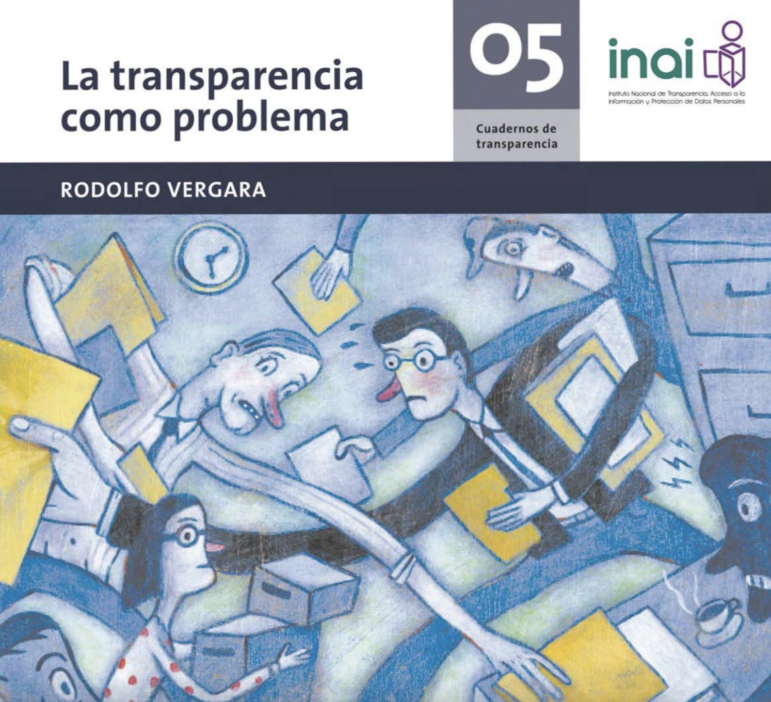
Cover image of Transparency Notebook No. 5, published by Mexico’s National Institute for Access to Public Information (INAI). Image: Screenshot
She used the agency to obtain reports on the multimillion-dollar disbursements the government made during the bicentennial celebrations of Mexico’s independence, finding contracts with numerous irregularities.
“There were acts of corruption that were revealed thanks to reporters who filed access to information requests, and the INAI helped us open all that documentation,” she said.
But even way back in 2011, she won the National Journalism Award for her report, “The Ministry of Public Security Pays 118 Million Pesos for a Television Series,” an investigation published in El Universal that revealed that the Mexican government had spent approximately US$6 million filming a soap opera.
“The high point was when I asked for information about the contracts the government had made with Televisa to create propaganda and promote everything they were doing with their war on organized crime, [and found] this soap opera paid for with public funds to praise the government’s work,” the journalist said.
The question on many reporters’ lips: will the government be inclined to reveal similar documents when they are both subject and judge of transparency requests?
Locks on Information
For political scientist Héctor Sebastian Arcos Robledo, a data analyst at Mexicans Against Corruption and Impunity, the move to shutter INAI represents a significant setback.
“This has a significant impact on journalism. This change is a severe blow to reporters who consistently use their right to access information to conduct investigations, verify data, and carry out their oversight work of public authorities.”
Arcos Robledo argues that Mexico has gone from having an autonomous, collegiate, and specialized body to having a department whose leadership will be directly appointed by the Mexican presidency.
“How can we trust an institution that hierarchically reports to the very power it is supposed to oversee? It’s impossible; there will be a perverse incentive that seriously compromises the impartiality of decisions and facilitates subordination to political interests,” he said.
He also raises concerns about amendments to the transparency law approved alongside the dissolution of INAI, and the inclusion of grounds for the government to withhold information that was previously public.
“The new law expands the reasons for withholding public information; it introduces vague and subjective concepts such as ‘social peace,’ ‘proven acts of corruption,’ or ‘damage to the interests of the state,’” he said. “These ambiguous terms will serve to discretionally deny access to information that is inconvenient for the government.”
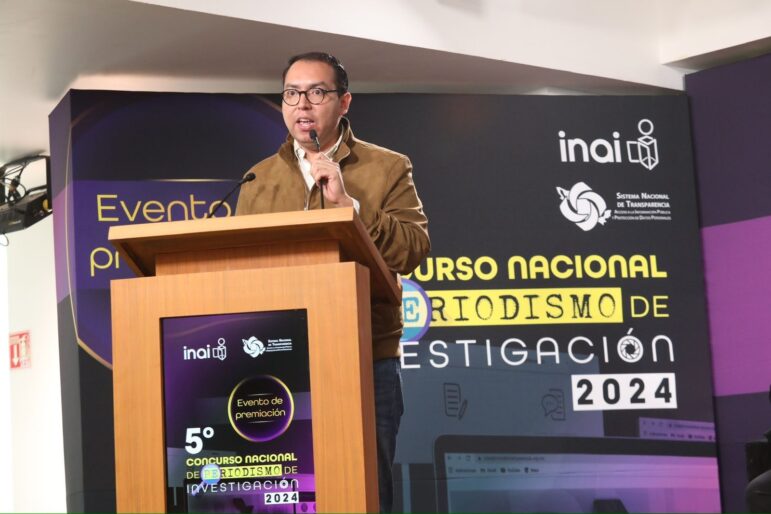
Political scientist Sebastián Arcos Robledo warns that the dissolution of the National Institute for Access to Public Information is a severe blow to Mexican journalism. Image: Courtesy of Arcos Robledo
Soledad Durazo Barceló, a journalist and professor at the University of Sonora, echoes that point: the same agencies potentially under investigation will be involved in deciding whether there is merit in sharing files.
She published a book in February on this topic — “Persistent Journalism: What Happens After the Refusal to Provide Information” — in which she discusses how the work of INAI was crucial in enabling investigative reporters to access data, documents, files, and reports.
The transparency mechanisms guaranteed under the old regime, she said, meant that “when investigative journalists were denied access, they could resort to legal means to further their requests, and INAI forced them to open the files.”
In the past, she said, the government had “exhausted” numerous avenues to try to get around providing information, making it unlikely the same agencies would suddenly become open information evangelists now, she suggested.
Or to put it in her words: “I highly doubt that the state will shoot itself in the foot.”
 Priscila Cárdenas is an investigative reporter and teacher based in Sonora, Mexico. She specializes in issues of access to information, accountability, and transparency. She was an editor at the Border Hub, is responsible for investigative reporting on the digital platform Proyecto Puente, and oversees the Sonora Observatory for Access to Public Information. In 2019, she won a national journalism award in Mexico and received an honorable mention from the Inter-American Press Association for an investigation published by Connectas, Proyecto Puente, and Aristegui News.
Priscila Cárdenas is an investigative reporter and teacher based in Sonora, Mexico. She specializes in issues of access to information, accountability, and transparency. She was an editor at the Border Hub, is responsible for investigative reporting on the digital platform Proyecto Puente, and oversees the Sonora Observatory for Access to Public Information. In 2019, she won a national journalism award in Mexico and received an honorable mention from the Inter-American Press Association for an investigation published by Connectas, Proyecto Puente, and Aristegui News.

